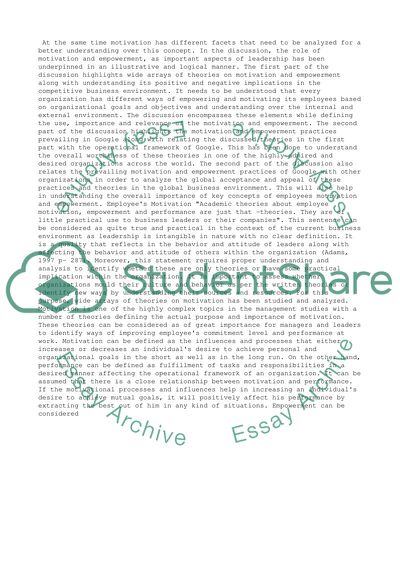Cite this document
(“Employees Motivation and Empowerment Essay Example | Topics and Well Written Essays - 4750 words”, n.d.)
Retrieved from https://studentshare.org/management/1393024-employees-motivation-and-empowerment
Retrieved from https://studentshare.org/management/1393024-employees-motivation-and-empowerment
(Employees Motivation and Empowerment Essay Example | Topics and Well Written Essays - 4750 Words)
https://studentshare.org/management/1393024-employees-motivation-and-empowerment.
https://studentshare.org/management/1393024-employees-motivation-and-empowerment.
“Employees Motivation and Empowerment Essay Example | Topics and Well Written Essays - 4750 Words”, n.d. https://studentshare.org/management/1393024-employees-motivation-and-empowerment.


